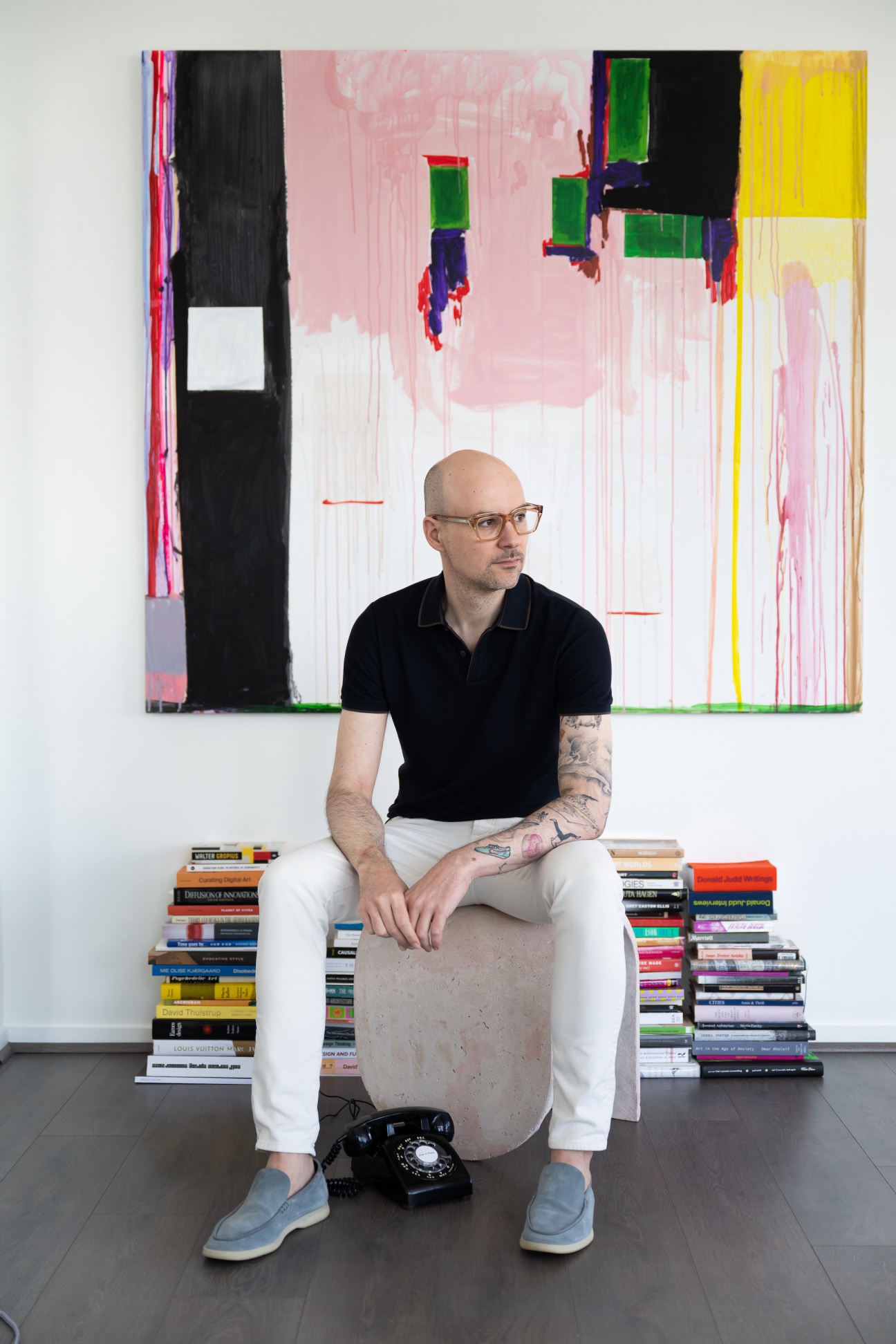
Daniel English loves John Giorno. Not only does the 43-year-old collector make nightly calls to his very own Dial-A-Poem, which rests atop a Jerome Byron plinth, he also has a Giorno idiom tattooed on his left inner bicep (“Space Forgets You”). “I don’t know what he meant by it, but to me the idea is empowering. You can leave a space and it forgets you, so you don’t have to take it too seriously,” English says. “But also—if you don’t do something to make an impact, space will forget you.”
Today, English—who was raised outside of Detroit and is based between New York and Arlington, Virginia—moves through the art world’s insular spaces with ease. But he didn’t discover his love for contemporary art until he read Gerhard Richter’s The Daily Practice of Painting in college—a light bulb moment he remembers well.
“I have a journal entry from college where I wrote about how enamored I was with art because it helped broaden my perspective and see the world differently. I found that powerful,” he recalls. It took a few years (during which he worked for several tech start-ups and founded his own investment firm) before art called to him in earnest.
“As someone who didn’t study art history or grow up in a family that collected art, it was very intimidating,” says English of his early forays into collecting two years ago. But a sharp eye, honed during his years in real estate investing, as well as the guidance of veteran advisor Rick Cappellazzo, have enabled him to amass a collection that includes works by Lynne Mapp Drexler, Karyn Lyons, Wendy Park, Hayley Tompkins, Jane Dickson, Titus McBeath, and Henry Swanson. He is also preparing to serve as a founding member of the Met’s newly minted Vanguard Council, which he says “will provide support for innovative, visionary, and cutting-edge projects” at the museum.
The appointment is part of a larger effort, undertaken with help from Cappellazzo, to make the practice of collecting feel more accessible. “At first, I was terrified of galleries and I didn’t understand how to navigate it all,” he says. “But [in my work,] it’s not like I just see a building and then go buy it. There’s a whole infrastructure of advisors, specialists, researchers—I realized I could tap into those same resources in the art world.”
For more from the 2024 Young Collectors list, read conversations with Patrick Finnegan, Noora Raj Brown, and Jen Rubio.










 in your life?
in your life?

